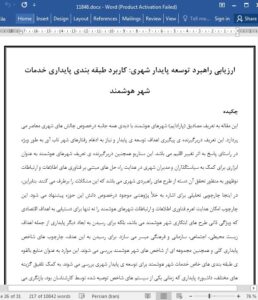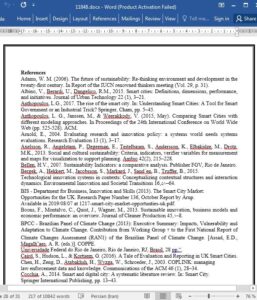Abstract
This article contextualizes the smart cities paradigm in the panorama of contemporary city challenges, which increasingly encompasses the pursuit of sustainable development goals and the need to incorporate urban resilient behaviors, mainly in response to the impacts of climate change. Such a scenario also comprises the interpretation of smart cities as tools to assist policymakers and city administrators in directing solutions based on emerging information and communication technologies (ICTs) to the materialization of urban strategic plans addressing these confrontations. There are, however, no established indicator systems that attest to the substantiation of such plans by smart city solutions, nor to their alignment with the goals of urban sustainable development. Therefore, an analytical framework is proposed here to address this knowledge gap. It enables guiding the leverage of smart cities’ ICTs, not only for the achievement of economic goals, a feature intrinsic to smart city innovations, but also to reach other sustainability dimensions, as the environmental, social, institutional and cultural. To this end, generic sustainability indicator frameworks and also a set of smart city indicators are explored. They are examined as potential sources of specific taxonomies in smart city services for urban sustainable development. From this compilation of options, the Dashboard of Sustainability, once one of the indicator systems most recommended by experts, is revisited. It is adapted as a framework for analyzing and helping to maintain the strategic targeting of smart city solutions, during their entire lifecycle, at sustainability. To complete the qualitative-analytical-taxonomic frame, the services offered by a real smart city solution, the Rio de Janeiro Center of Operations, are employed as a model. This allows investigating its 9-year transition from a wider, larger capacity, strategic and innovative configuration in orientation towards sustainability perspectives, to a more narrow, operational composition, that is predominantly devoted to the economic dimension.
5. Concluding
remarks In response to urban wicked problems and other contemporary challenges, which are further intensified by the impacts of climate change, city governments around the world have been committing to sustainable development objectives, such as improvements to urban resilience. This agreement on sustainability has called for public authorities to be able to elaborate and materialize strategic plans oriented towards a broader sustainability in the short and medium terms, that is, focused not only on prioritizing the economic perspective but also the environmental, social, institutional and cultural dimensions.
Seeking assistance in coping with these pressures, public administrations have been relying on smart city services and the institutionalization of indicator systems that are capable of proving the effectiveness of such solutions. However, despite the efforts of standardization bodies and the proliferation of alternative indicator models, there is still no globally recognized standard for smart city architectures, and which moderates the complexity of qualitatively or quantitatively analyzing their performance, particularly in terms of considering all sustainability perspectives. This compromises the effectiveness of generic rankings among cities as incentive mechanisms for their performance improvement and the reuse of successful smart city solutions in other urban contexts.











